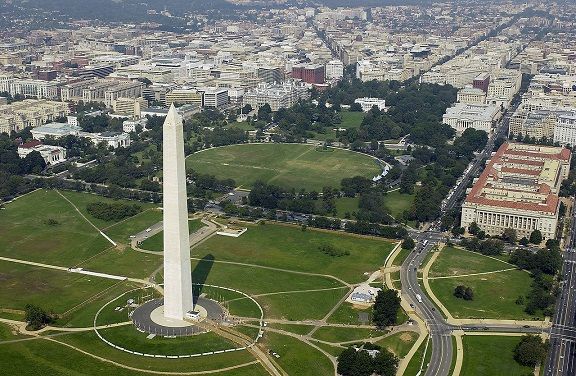Washington partners with Autodesk on sustainable city plan
Washington, D.C. is aiming to become the most liveable sustainable city in the United States by 2032

Washington, D.C. is aiming to become the most liveable sustainable city in the United States by 2032.
This target is outlined in the Sustainable DC 2032 plan, and covers areas including climate change mitigation and adaption, job creation, and healthcare.
Some of the most ambitious targets are related to energy and stormwater management and the city is aiming to retrofit 100 per cent of existing commercial and multi-family buildings to net-zero energy standards.
The Sustainable DC 2032 plan also includes the target of using 75 per cent of the landscape to capture rainwater for filtration or reuse to relieve pressures on stormwater infrastructure.
The District has introduced new regulations to help implement the plan and the Department of Energy and Environment (DOEE) has created the first private market for trading stormwater retention credits.
This market is designed to encourage owners to build green infrastructure, generate credits, and sell them on an open market to developers.
The Downtown DC Business Improvement District (BID) along with the DOEE and Interface Engineering consultants have partnered with the leading design and engineering company Autodesk team to create a data-rich City Model, which captures all of the energy and water flows within a city, to help meet their targets.
Bill Updike, Chief, Green Building & Climate Branch at DOEE said: “We want to use the model to test multiple ‘what-if’ scenarios for policy changes, technology adoption, or behaviour change. For example, how much energy will lighting retrofits save and which buildings should we target? How much stormwater runoff could we reduce if we implemented green infrastructure on the District scale?”
This target is outlined in the Sustainable DC 2032 plan, and covers areas including climate change mitigation and adaption, job creation, and healthcare.
Some of the most ambitious targets are related to energy and stormwater management and the city is aiming to retrofit 100 per cent of existing commercial and multi-family buildings to net-zero energy standards.
The Sustainable DC 2032 plan also includes the target of using 75 per cent of the landscape to capture rainwater for filtration or reuse to relieve pressures on stormwater infrastructure.
The District has introduced new regulations to help implement the plan and the Department of Energy and Environment (DOEE) has created the first private market for trading stormwater retention credits.
This market is designed to encourage owners to build green infrastructure, generate credits, and sell them on an open market to developers.
The Downtown DC Business Improvement District (BID) along with the DOEE and Interface Engineering consultants have partnered with the leading design and engineering company Autodesk team to create a data-rich City Model, which captures all of the energy and water flows within a city, to help meet their targets.
Bill Updike, Chief, Green Building & Climate Branch at DOEE said: “We want to use the model to test multiple ‘what-if’ scenarios for policy changes, technology adoption, or behaviour change. For example, how much energy will lighting retrofits save and which buildings should we target? How much stormwater runoff could we reduce if we implemented green infrastructure on the District scale?”
